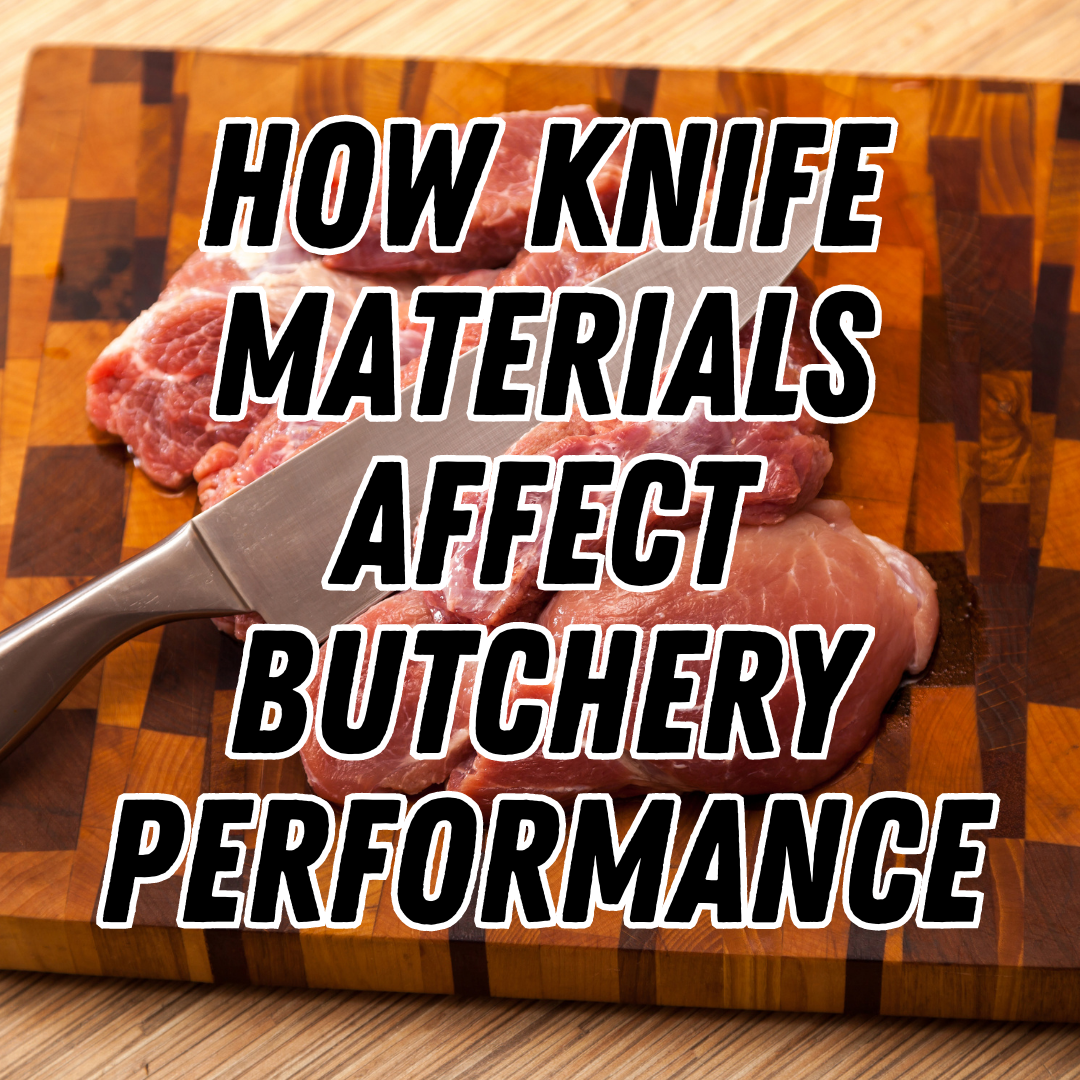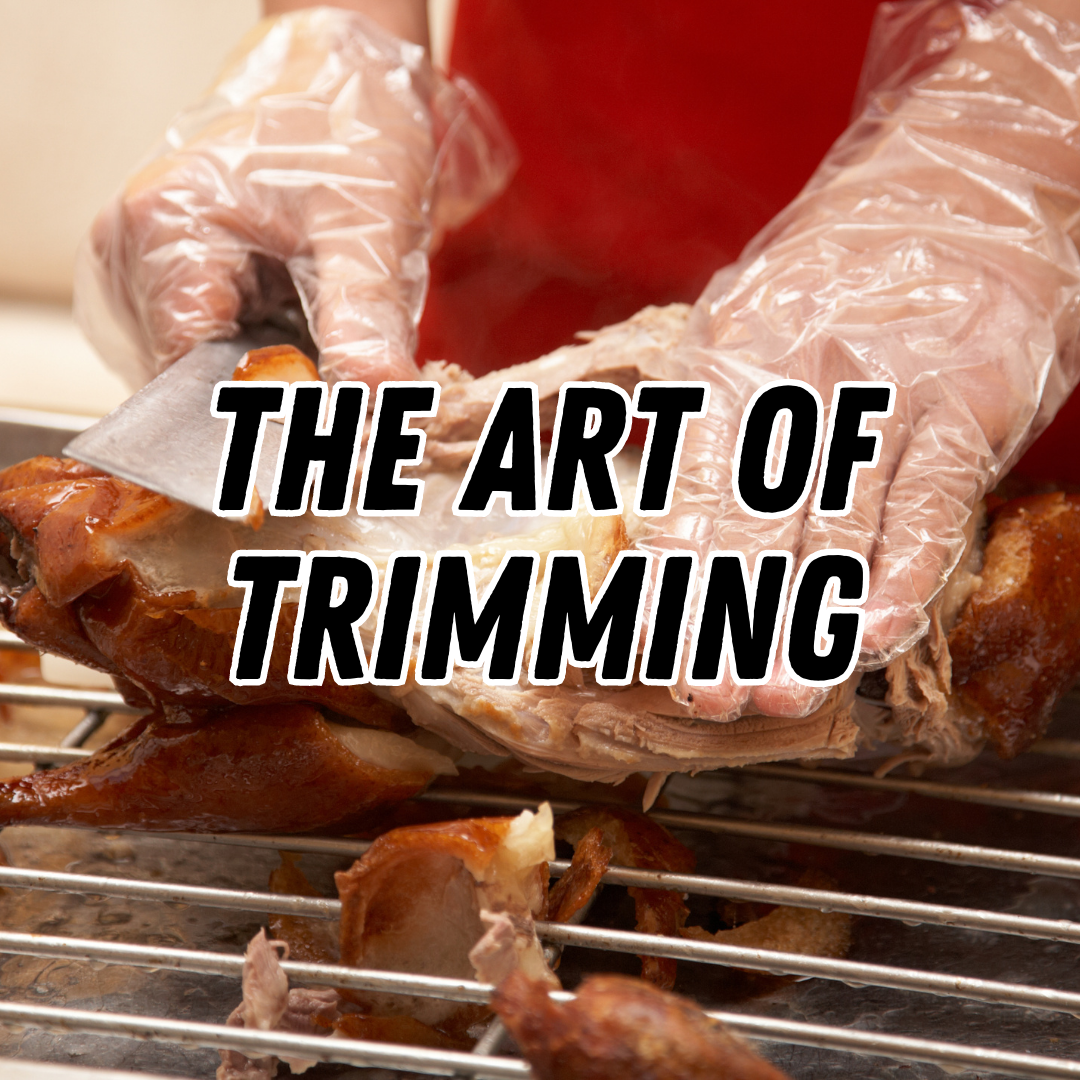Are your butchery knives feeling a bit "uninspired" lately? Not cutting it in the kitchen like they used to? Don't worry; we've got the secret sauce to bring back that cutting edge!
In the thrilling world of culinary arts, knives are more than mere tools—they are indispensable buddies on our epicurean adventures. Like any trusted ally, these blades deserve the best care to maintain their razor-sharp performance.
This article delves into the science behind blade care, offering valuable insights into keeping butchery knives in top condition. We will explore best practices for cleaning and maintaining these essential tools, emphasising the prevention of rust and other blade damage.
Understanding Blade Maintenance
Proper blade maintenance is not just a routine task; it is rooted in scientific principles that impact the performance and lifespan of your butchery knives. Understanding the science behind knife maintenance allows you to appreciate the significance of these practices.
The Science Behind Knife Maintenance
When you use a knife, the cutting edge is subjected to wear and microscopic damage. Blade maintenance, such as honing and sharpening, helps realign and remove these imperfections, restoring the edge to its optimal shape.
How Proper Maintenance Affects Blade Sharpness and Durability
Regular maintenance preserves the knife's sharpness, ensuring precise cuts with minimal effort. Keeping the blade clean and dry prevents corrosion and other forms of damage, ultimately extending the knife's durability and lifespan.
With a solid understanding of blade maintenance's scientific foundations, you'll be better equipped to implement effective techniques that keep your butchery knives in top condition, ready to tackle any culinary challenge.
Best Practices for Cleaning and Maintaining Your Knives
Properly cleaning and maintaining your butchery knives is crucial for their longevity and performance. Following these best practices will ensure that your blades remain sharp and durable throughout their lifetime.
Preparing Your Knives for Cleaning
Before you begin cleaning your knives, it's essential to prepare them properly. Start by wiping off any excess food particles or debris from the blade using a clean cloth or paper towel. This initial step prevents clogging your sink or dishwasher (please don't put your knives in the dishwasher) and makes cleaning more effective.
Proper Cleaning Techniques
You can choose between handwashing and using a dishwasher when cleaning your knives. Handwashing is generally the preferred method as it allows for greater control and reduces the risk of damage. To handwash your knives, use mild dish detergent and warm water. Gently scrub the blade and handle with a soft sponge or brush, avoiding abrasive materials that can scratch the knife's surface.
While some knives may claim dishwasher-safe, repeated exposure to high temperatures and harsh detergents can still lead to blade damage over time. It's best to handwash your knives to maintain their sharpness and appearance.
Drying and Storage Tips
After cleaning, it's crucial to dry your knives thoroughly to prevent moisture-induced damage like rust. Two standard methods are towel drying and air drying. Towel drying involves using a clean, soft towel to dry the knife immediately after washing. Ensure that the blade, handle, and any crevices are thoroughly dried.
Air drying is an alternative method that involves placing the knives in a designated knife rack or using a magnetic strip. This allows the blades to air dry naturally, reducing the risk of moisture build-up and potential damage.
Proper knife storage is also essential in maintaining their condition. Avoid overcrowding knives in a drawer or container, leading to blade dings and dulling. Instead, opt for a knife block, magnetic strip, or knife roll to keep your knives safe and easily accessible.
Preventing Rust and Blade Damage
Blade maintenance goes beyond cleaning; it also involves safeguarding your butchery knives against rust and damage. Understanding the causes of rust and blade damage is crucial in implementing effective prevention techniques.
Understanding the Causes of Rust and Blade Damage
Rust is the result of oxidation when moisture and oxygen react with the metal surface of the blade. Exposure to acidic or corrosive substances can also accelerate blade damage, compromising its longevity and performance.
Techniques to Prevent Rust and Damage
1. Applying a Protective Coating
Consider applying a thin layer of food-safe mineral oil or specialized blade oil to create a protective barrier. This coating will prevent moisture and oxygen from reaching the metal, reducing the risk of rust formation.
2. Regularly Oil the Blades
Regularly oiling your butchery knives, especially after cleaning, will help keep the blades in optimal condition. Use a few drops of oil and spread it along the entire blade surface for maximum protection.
3. Storing Knives in a Dry Environment
Ensure your knives are completely dry before storing them. Store them in a dry environment with low humidity to minimise the chances of moisture-related damage.
4. Avoiding Exposure to Acidic or Corrosive Substances
Be cautious when using knives on acidic ingredients, such as tomatoes or citrus fruits, as prolonged exposure can rust the blade. Clean and dry the knife immediately after use to prevent damage.
Common Mistakes in Knife Maintenance and How to Avoid Them
Proper knife maintenance is essential for keeping your butchery knives in top condition. However, inevitable mistakes can inadvertently damage the blades and reduce their lifespan. Here are some common pitfalls and how to avoid them:
1. Over-sharpening and its Impact on Blade Life
Sharpening your knives too frequently or aggressively can wear down the blade material, leading to a shorter lifespan.
Avoid excessive sharpening and instead focus on honing the blade regularly to maintain its edge.
2. Using Improper Cutting Surfaces
Cutting on hard surfaces like ceramic, glass, or metal can cause microscopic damage to the knife's edge. You can opt for cutting boards made of softer materials like wood or plastic to preserve the blade's sharpness.
3. Incorrect Storage Practices
Storing knives loosely in drawers without protection can cause blades to rub against each other, leading to nicks and scratches. Invest in knife guards or magnetic strips to store your knives safely and prevent damage.
4. Neglecting to Inspect and Maintain Knife Handles
The handle is just as important as the blade. Neglecting handle maintenance can result in loose rivets or cracks, compromising the knife's stability and safety. Regularly inspect handles for any issues and address them promptly.
By avoiding these common mistakes and following the best practices outlined earlier, you can ensure your butchery knives remain sharp, durable, and ready for culinary challenges.
Proper care and attention will extend their lifespan, saving you time and money in the long run.
Honing vs. Sharpening
When it comes to blade maintenance, understanding the difference between honing and sharpening is crucial. Honing and sharpening are two distinct techniques that play different roles in keeping your butchery knives in optimal condition.
Honing for Edge Alignment
Honing is the process of realigning the blade's edge, which tends to bend slightly or fold over with regular use. This technique does not remove material from the blade but helps maintain its sharpness and ensures precision cutting. By using a honing rod or honing steel, you can keep the knife's edge aligned and prolong the time between actual sharpening sessions.
Sharpening for Edge Restoration
On the other hand, sharpening involves removing material from the blade to restore a dulled or damaged edge. This process is more aggressive than honing and is performed less frequently. Using sharpening stones, you can rejuvenate the knife's sharpness, giving it a brand-new cutting edge.
Conclusion
As we delve into the science of blade maintenance, it becomes evident that a well-maintained butcher knife is essential for precision cuts and a pleasurable cooking experience.
By following the best cleaning, honing, and sharpening practices, you can ensure your blades remain sharp, durable, and reliable in your culinary endeavours.
Now, let's sharpen our commitment to blade care with a simple question: Are you ready to elevate your knife maintenance skills and preserve the longevity of your butchery knives? Pick up your honing rod and sharpening stone, embrace the techniques you've learned, and witness the transformation in your knife's performance.
Keep your knives sharp, and let your culinary creativity flourish!




